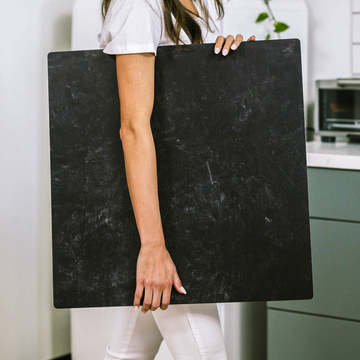If you scroll through social feeds or online shops, it’s obvious-flat lay photography is everywhere. The right arrangement can make simple products look irresistible. But there’s a hidden ingredient most guides never talk about: your choice of backdrop. More than a pretty surface, the right backdrop can transform your photos from bland to brand-defining.
Let’s pull back the curtain and explore how choosing the right surface goes far beyond looks. When you understand the advanced elements at play, you’ll see your flat lays-and your business-in a whole new light.
Reflectivity: Light’s Dance Partner
Not all surfaces interact with light in the same way. Some are almost mirror-like, throwing glare across your product. Others eat up light, leaving your photo looking flat and uninspired. The secret sauce? Semi-matte, micro-textured backdrops.
- Glossy boards can create unwanted hotspots and reflections.
- Ultra-matte surfaces may make your scene look dull.
- A finely tuned balance softens harsh shadows while keeping products vibrant.
Test your surface by angling it toward your main light. A professional backdrop diffuses light gently-no hotspots, just effortless glow. Suddenly, your products pop without fighting glare.
Color Fidelity: Why “White” Isn’t Always White
Everyone loves working with bright, clean surfaces. But did you know many “white” backdrops aren’t truly neutral? Some cast subtle blue or yellow hues, which can distort product colors. If you’re selling online, accurate color is everything.
- Place a grey card or white balance target on each backdrop.
- Shoot with your regular lighting setup.
- Review for any odd tints. Consistent color is a signal of quality.
Look for surfaces designed for color accuracy. This step might sound geeky, but it will save you hours of editing-and prevent costly returns from color discrepancies.
Texture: Friend or Foe?
Texture adds realism and tactile interest, but too much can dominate your shot-especially in close-ups.
- Coarse, fake-looking textures can distract from your products.
- A surface engineered for balance looks great in both wide shots and detail crops.
- For delicate items, lay a frosted acrylic sheet on top to gently soften strong textures as needed.
Next time you’re setting up, get up close and check for unwanted bumps or patterns stealing the spotlight from your product.
Angles and Setups: Think Beyond Flat
Flat lay doesn’t mean “only top-down.” Professional surfaces let you experiment with creative angles, seamless walls, or curved backgrounds. That flexibility turns a static flat lay into a dynamic storytelling scene.
- Use rigid backdrops with clips or brackets to form angled or vertical planes.
- Try a 25° tilt for earrings or mugs to reveal both face and depth.
- Construct instant “environments” using L-brackets for more immersive visuals.
Flimsy, rolled boards can’t handle this-investing in sturdy surfaces unlocks a world of composition options.
Durability: Built to Work, Not Just to Look Good
Your studio gets messy. Frosting, pigment, oils-they all find their way onto your props. Cheap paperboards wave the white flag at the first sign of a spill. Purpose-built surfaces shrug it all off.
- Engineered backdrops wipe clean easily and resist stains.
- They’re tough enough to bend, clip, or stack for custom scenes.
- Some even offer chemical resistance, perfect for food and skincare setups.
That reliability saves you time, money, and stress as your business grows. It’s the silent workhorse behind every successful shoot.
Workflow Magic: Catalog Your Setups
If you want rock-solid consistency, build a quick “backdrop log.” Photograph each surface with a color card under your actual lighting. This archive makes future shoots (and edits) a breeze-your brand images will match today, tomorrow, and next year.
Takeaway: Surfaces as Strategic Tools
Your backdrop isn’t just a prop-it’s a creative partner. It controls light, color, and depth. Choosing the right surface eliminates hours of frustration and opens new styling possibilities.
Stop thinking of backdrops as background noise. Treat them like the strategic tools they are, and you’ll see the return in your images, your workflow, and your customer response.
Let your surface do more than just set the stage-let it help tell your story. You’ll never look at flat lay photography the same way again.



